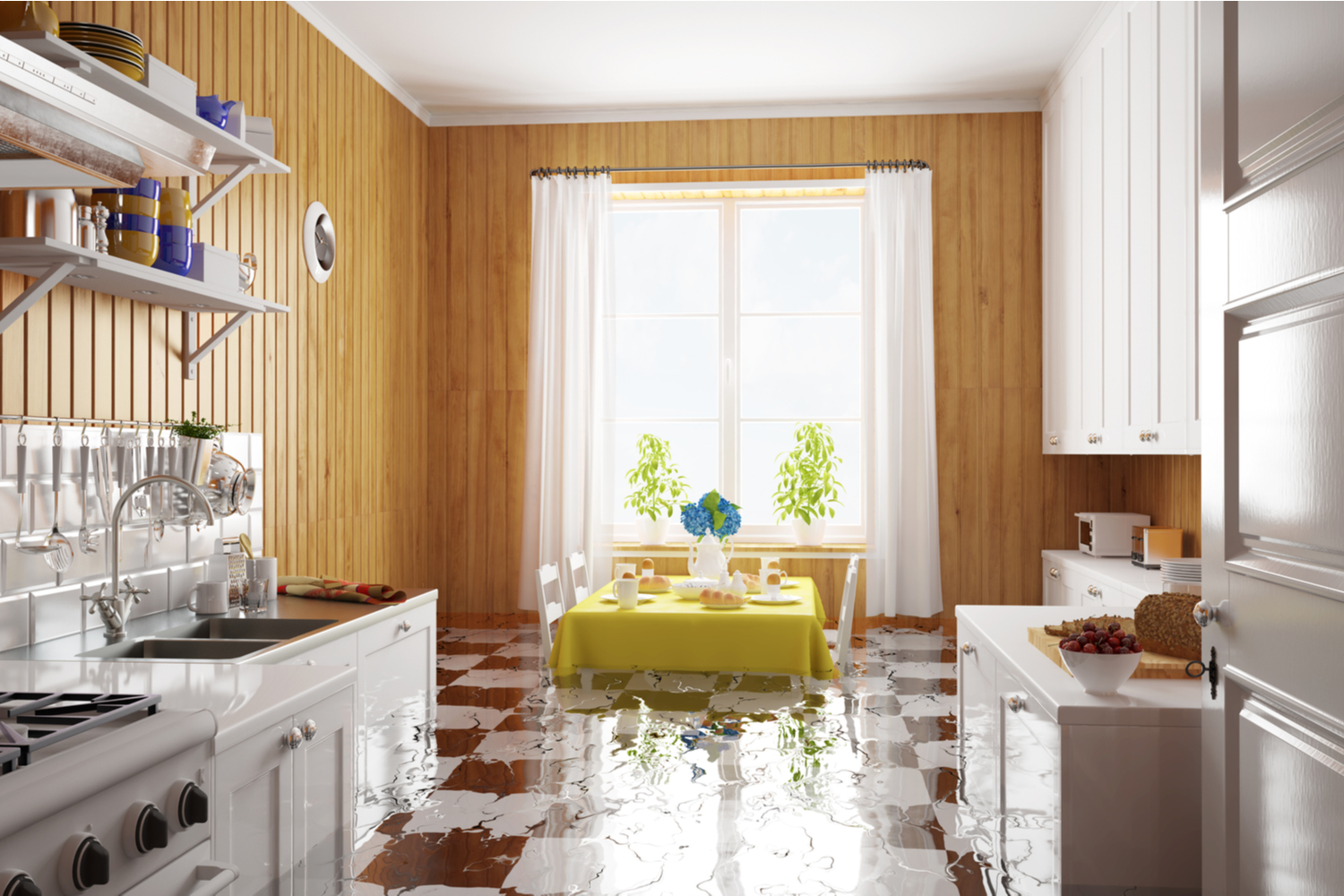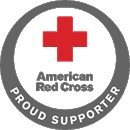Along with your bathroom, your kitchen is highly susceptible to water and mold damage. It’s warmer in the kitchen than most other rooms due to the many cooking activities that takes place there. Heat builds up when the stove or oven is in use. Even toasters, coffeemakers, and dishwashers are supplying additional heat and humidity to your kitchen.
Humidity can be an issue. When water boils it turns from a liquid into a gas. Cooking releases moisture in the form of humidity into the air. In addition to that there are numerous water connections; under the sink, to the dishwasher, and to your refrigerator’s icemaker. High humidity or a leak from any these appliances can spell disaster in the form of water damage or mold infestation.
To protect your family’s health, you need to understand where the mold comes from, what you can do to prevent it, and what you must do to get rid of it.
Why is there Mold in my Kitchen?
Mold is everywhere. Its spores are already floating around your kitchen despite your best cleaning efforts. Mold spores enter through open doors or windows, on your shoes and clothing, even on your pets. These spores will float around and land anywhere. If that anywhere happens to contain sufficient moisture due to high humidity or a water leak, a mold colony can begin to grow.
Another way mold enters your kitchen is on the food or plants you bring in. Mold spores are so tiny that unless a colony of mold has been growing for a while, you can’t see one without the use of a microscope. Another significant source of mold spores is spoiled food. Have you ever opened a refrigerator drawer and couldn’t identify what exactly was that piece of food is that has spoiled and is covered with a fuzzy moldy?
Preventing Kitchen Water Damage
Now that you understand that there are always mold spores floating around looking for a place to grow, let’s explore some ways to eliminate water leaks and stop mold from ever becoming a problem in your kitchen.
Check for Leaks – icemaker lines, dishwashers, and freezers are all susceptible to leaks that are often slow leaks. Be aware of them and keep an eye on them. Another common area for water drips and leaks is under the kitchen sink. There are so many water connections down there that must be checked on; faucet connections, drain lines, disposal lines, supply and drain lines to and from the dishwasher. It wouldn’t be a bad idea to occasionally leave the cabinet doors under the sink open overnight every once in a while to help with air circulation.
Wipe Cabinets and Counters Regularly – never allow dirty dishes to pile up on the counters. Disinfect counters, backsplashes, and cabinets with antimicrobial cleaning products on a regular basis.
Air Circulation – kitchens have a vent over the stove for a reason. The vent will help remove moisture and keep humidity created by cooking under control. Reduce countertop clutter so that air can have a better flow throughout the kitchen. Every kitchen appliance that you own does not have to be left on the counters. Mold does not like air movement.
Trash It – as the old rock and roll song says…”Take out the papers and the trash”. Leaving spoiled food or leftovers sitting around provides food for mold. Food deteriorates over time (unless they are Twinkies, which have a shelf life the rivals plutonium). Get rid of anything that is spoiled in your refrigerator or pantry as soon as you discover it. And don’t place any spoiled foods in your kitchen garbage can, bag it and take it out of the house.
Clean Appliances Regularly – schedule regular cleaning of all kitchen appliances. Wipe down the refrigerator inside and out, run the dishwasher on the hottest setting possible while it is empty. Clean the coffee maker as well as the coffee pot. Don’t leave that last half of a cup of coffee sit in the pot until you use the coffee maker again. Empty those bread crumbs out of the toaster. Mold loves a little extra humidity and breadcrumbs.
What can I do if my Kitchen has Water Damage?
Our kitchens are considered to be the center of our homes. We gather there for meals, sit around the table to drink coffee and read the local newspaper, and maybe even the kids do their homework there. As much as you may like your kitchen, so does mold.
Mold will become a problem due to the presence of excess moisture in the form of water or humidity. If you discover mold in your kitchen, the first step towards removing it is to find and correct the source of the water leak.
Even small leaks can cause major damage if ignored. If you see water puddles under your refrigerator or coming from the front of you dishwasher take corrective action immediately.
When a water problem is discovered, it is time to seek professional help. If left alone mold may develop and make a mess of your kitchen. Mold can be the cause of several different health issues. Water Mold Fire Restoration is a nationally certified water damage and mold remediation company. Our expert remediation technicians are equipped and trained in the structural drying and the safe removal of mold from commercial and residential properties. Don’t risk the health of yourself or your family by trying to go it alone. Call us at 800-905-0277 and one of our water and mold damage experts can provide answers and offer solutions to any water or mold issue you may have with a free inspection. We can also be reached by email at help@watermoldfire.net.








